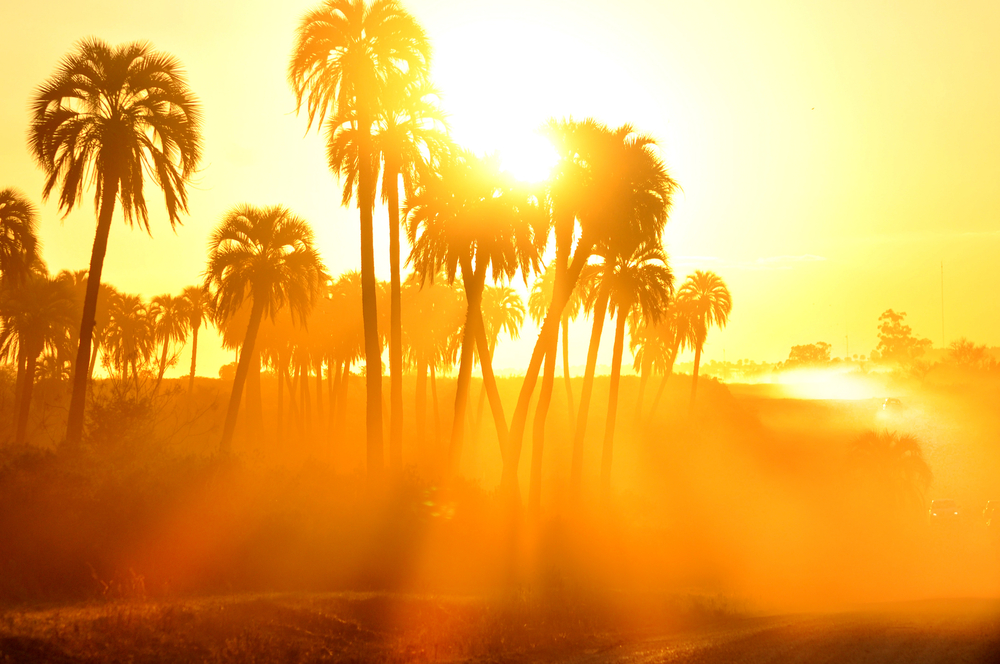Most countries can reach searing high temperatures at specific points during the year, particularly during the peak of summer. Meanwhile, some countries maintain consistently hot temperatures almost the entire year. Some you’ll consider the ideal vacation or honeymoon destination. Others, not so much.
We’ve looked at some of these year-round hot countries to see their average temperatures and came up with the list of the 30 hottest countries on earth.
Table of Contents
The Hottest Countries on Earth
| Number | Country | Yearly Average (F) | Yearly Average (C) |
|---|---|---|---|
| 1 | Djibouti | 83.3 | 28.5 |
| 2 | Mali | 83.1 | 28.4 |
| 3 | Saint Barthélemy | 83 | 28.3 |
| 4 | Niger | 83 | 28.3 |
| 5 | Burkina Faso | 82.9 | 28.3 |
| 6 | Aruba | 82.4 | 28 |
| 7 | The Gambia | 82.4 | 28 |
| 8 | Sudan | 82.2 | 27.9 |
| 9 | The Maldives | 82.1 | 27.8 |
| 10 | Mauritania | 82.1 | 27.8 |
| 11 | Anguilla | 81.8 | 27.7 |
| 12 | Curacao | 81.5 | 27.5 |
| 13 | Saint Lucia | 81.5 | 27.5 |
| 14 | Senegal | 81.5 | 27.5 |
| 15 | Marshall Islands | 81.3 | 27.4 |
| 16 | Chad | 81.1 | 27.3 |
| 17 | Tokelau | 81 | 27.2 |
| 18 | Tuvalu | 81 | 27.2 |
| 19 | Nauru | 81 | 27.2 |
| 20 | Federated States of Micronesia | 81 | 27.2 |
| 21 | Kiribati | 81 | 27.2 |
| 22 | Madagascar | 81 | 27.2 |
| 23 | Montserrat | 81 | 27.2 |
| 24 | Glorioso Islands | 81 | 27.2 |
| 25 | Juan de Nova Island | 81 | 27.2 |
| 26 | Brunei | 81 | 27.2 |
| 27 | Palau | 80.9 | 27.2 |
| 28 | American Samoa | 80.8 | 27.1 |
| 29 | Thailand | 80.7 | 27.1 |
| 30 | Yemen | 80.7 | 27.1 |
1. Djibouti: 83.3°F (28.5° C)
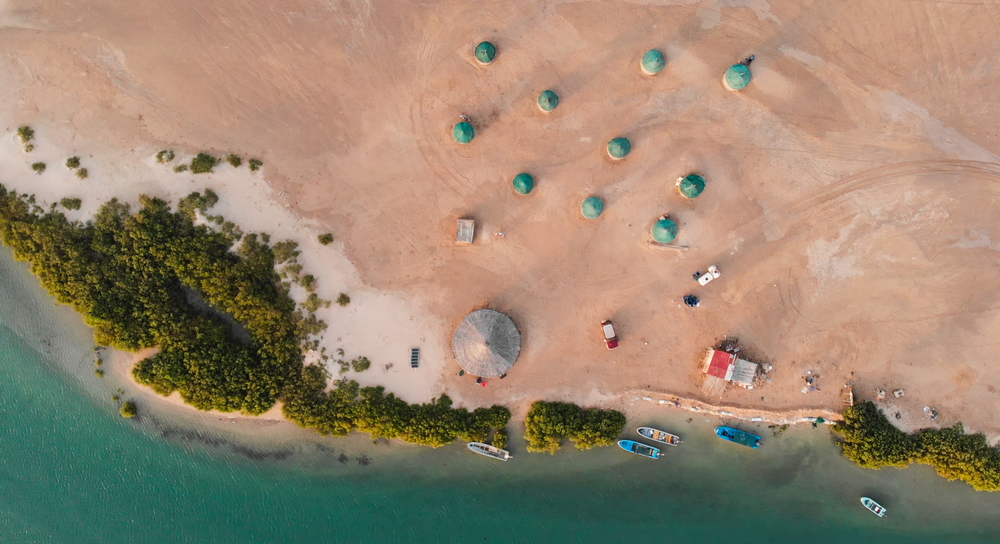
Djibouti is the warmest country on the planet, with an average temperature of 28.5°C (83.3℉).
It shares boundaries with Somalia, Ethiopia, and Eritrea and sits at the southernmost point of the Red Sea, directly across from Yemen.
Djibouti’s two regions – the shoreline area and the mountainous interior – have their own distinct weather systems. Djibouti, the country’s capital, lies on the coast and is hot all year.
It has a maximum average temperature between 30°C (80°F) and 41°C (106°F) in the winter and summer, respectively. The hottest temperature ever recorded was 46.1°C (115°F). Numerous regions of the country never receive any rain, meaning there is little respite from the heat.
2. Mali: 83.1°F (28.4°C)
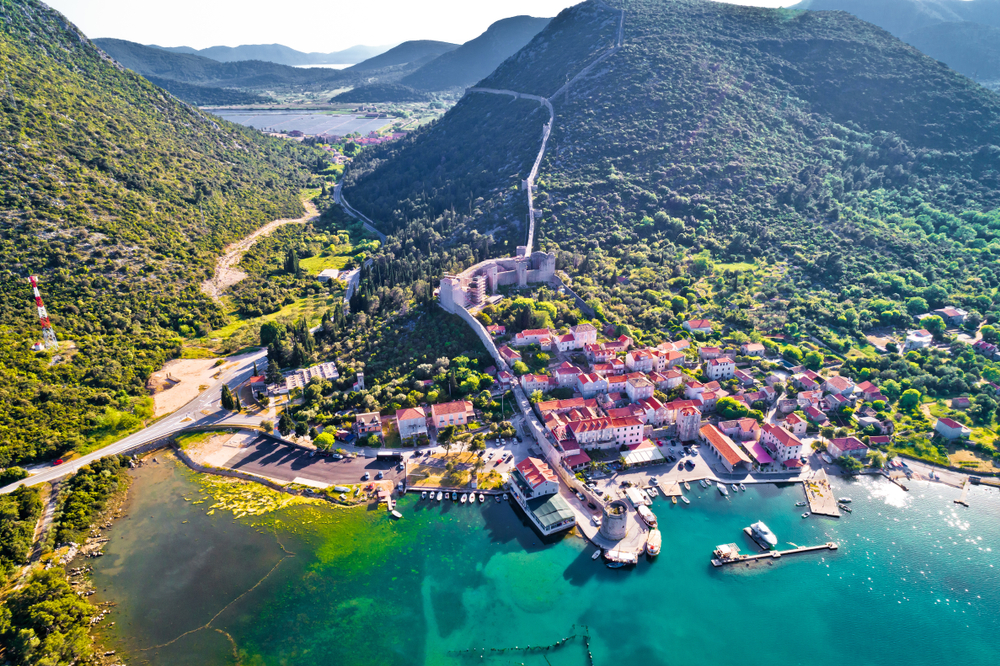
Mali, a vast country in western Africa, is primarily surrounded by the Sahara Desert. Despite the fact it is one of Africa’s biggest nations, the civilization here is relatively tiny.
The country of Mali is among the globe’s warmest and no surprise – the thermal equator runs through the country.
Water shortages are common in Mali, which receives very little rain. In the southern tip of the country, the rainy season lasts from late April to early October. An inner delta forms during this period when the Niger River floods.
Mali’s massive, northern desert region has typical desert weather with lengthy, scorching summers and little rain.
Throughout the north of the Sahara Desert, the hottest months are June and July, when the average high temperature hits 46°C (114.8°F) in Araouane and nearly 48°C (118.4°F) throughout Taoudenni.
3. Saint Barthélemy: 83°F (28.3°C)
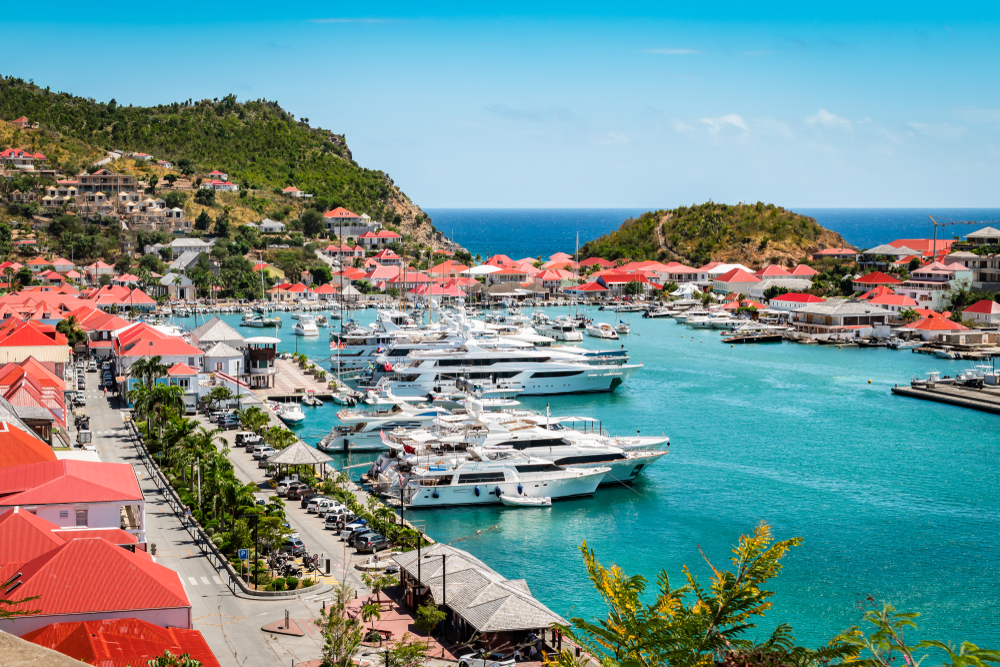
This Caribbean island, commonly called St. Barts, is a popular vacation destination because of its stunning beaches. Due to Hurricane Irma in 2017, The French Collectivity of St. Barts was severely damaged and is still recovering.
It’s hot, breezy, and somewhat cloudy in St. Barts. Between 75 and 88°F. During the year, the climate is relatively stable. The lowest temperature is 23°C (73°F) from January to March and 26°C (79°F) from June to September.
As mountain ranges and waterways are absent, water is scarce, so downpours, desalination from the ocean, or boilers are used to acquire water. Amid their sweltering summers, sea breezes help to cool things down.
4. Niger: 83°F (28.3°C)
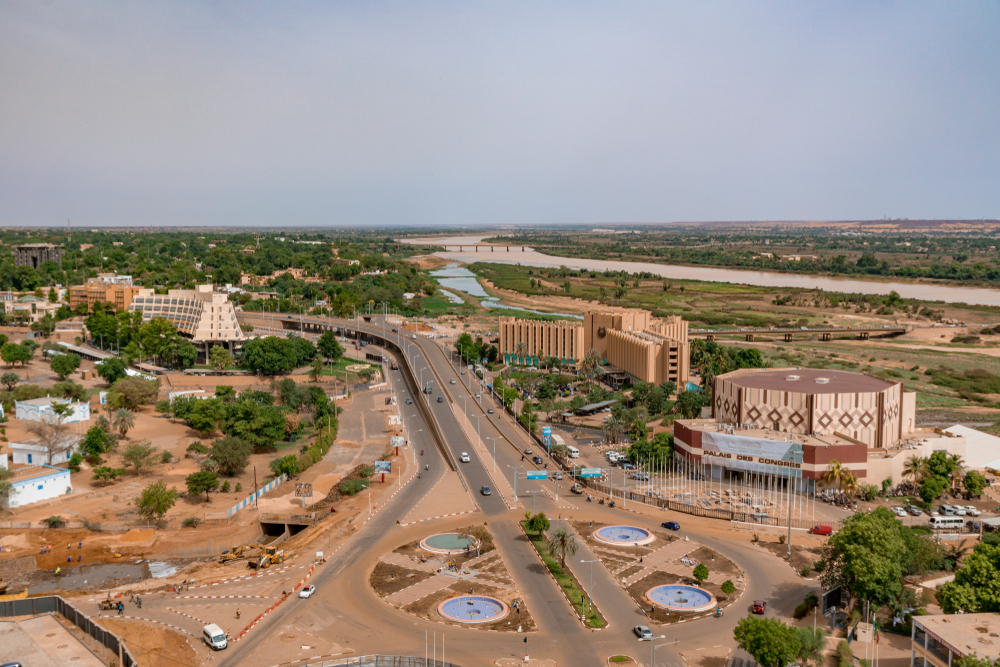
Niger’s name derives from a river that flows through the country, but most of its landscape forms part of the Sahara Desert. Since its independence from France in 1960, the country has faced significant coups and political unrest.
From October through May, Niger experiences a lengthy and grueling dry season that intertwines with the West African monsoon. Its wet season occurs infrequently and is also dictated by the monsoon.
The yearly average temperature in Niger ranges from 21.9° to 36.4°C, with the highlands experiencing significantly lower temperatures. There is little variation in the amount of rain that falls in any given year.
5. Burkina Faso: 82.9°F (28.3°C)
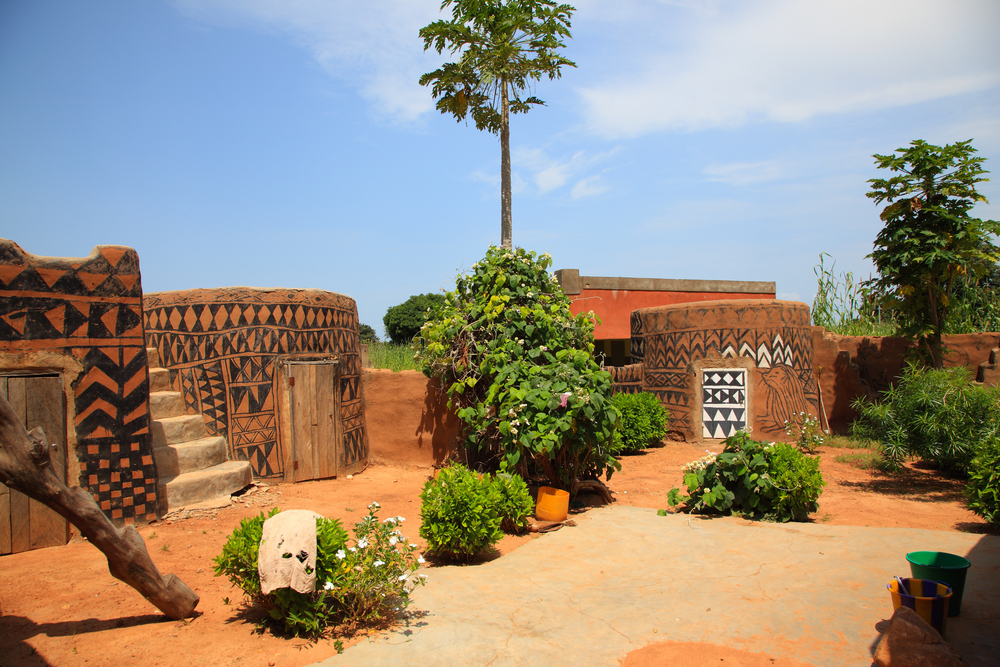
The Sahara Desert covers the north section of this West African country – which means this Burkina Faso is subject to extreme heat and is vulnerable to dry spells.
Burkina Faso has a hot climate all year round. Higher temperatures in the northern and southern regions are typically 32°C (90 °F) from December through January. However, they might elevate during the hot season during July and August as well.
6. Aruba: 82.4°F (28°C)
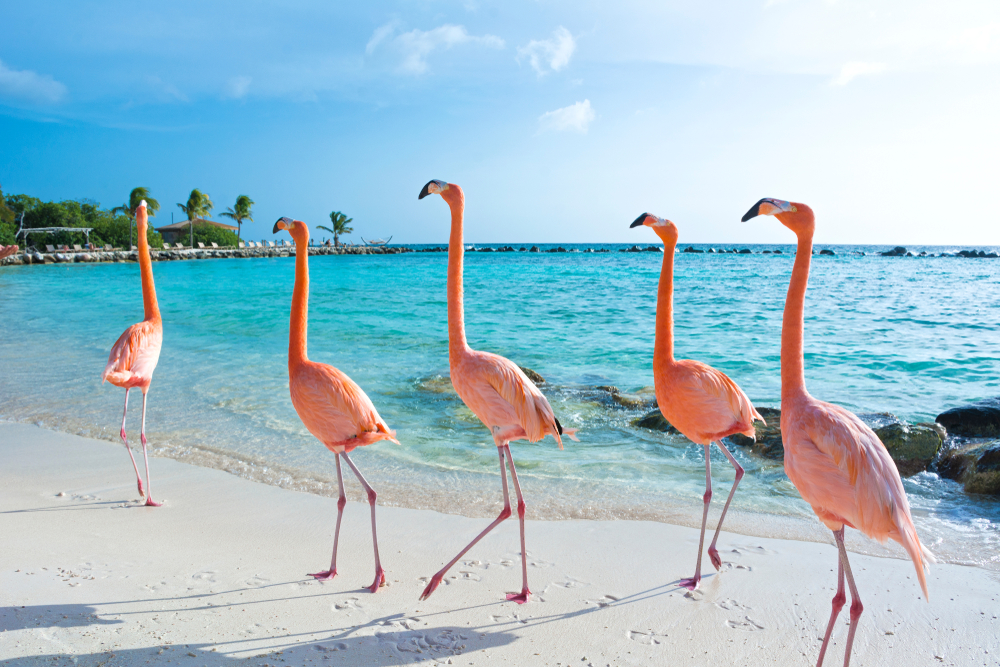
Aruba is a small island in the Caribbean that is part of the Kingdom of the Netherlands. It is a popular vacation destination, and tourists can take a dip with flamingos while vacationing there.
All year, highs of 29 to 31°C (84 to 88°F) are the norm in Aruba’s tropical environment. The atmosphere is humid; however, the constant trade winds help to keep things cool.
Aruba sees an average temperature of 28.5°C (83°F) in May, while the lowest temperature, 26.5°C (80°F) usually occurs in January.
November is the rainiest time of the year in Aruba, with an average precipitation of 90 millimeters. The ideal time to go swimming in the ocean is in October, while the water is an ideal average of 29.2°C.
7. The Gambia: 82.4°F (28°C)

Senegal surrounds this coastal West African country on three sides. The Gambia’s Atlantic coast hosts several popular resorts, which draws a large number of visitors.
The Gambia is a small nation with a tropical environment. There’s an arid period from November through May and a wet spell from June through mid-October, caused by the African monsoon.
Banjul, the country’s capital, sits on the shoreline and experiences more modern temperatures thanks to the ocean. However, as you head towards the interior, temperatures can reach a scorching 34°C.
8. Sudan: 82.2°F (27.9°C)
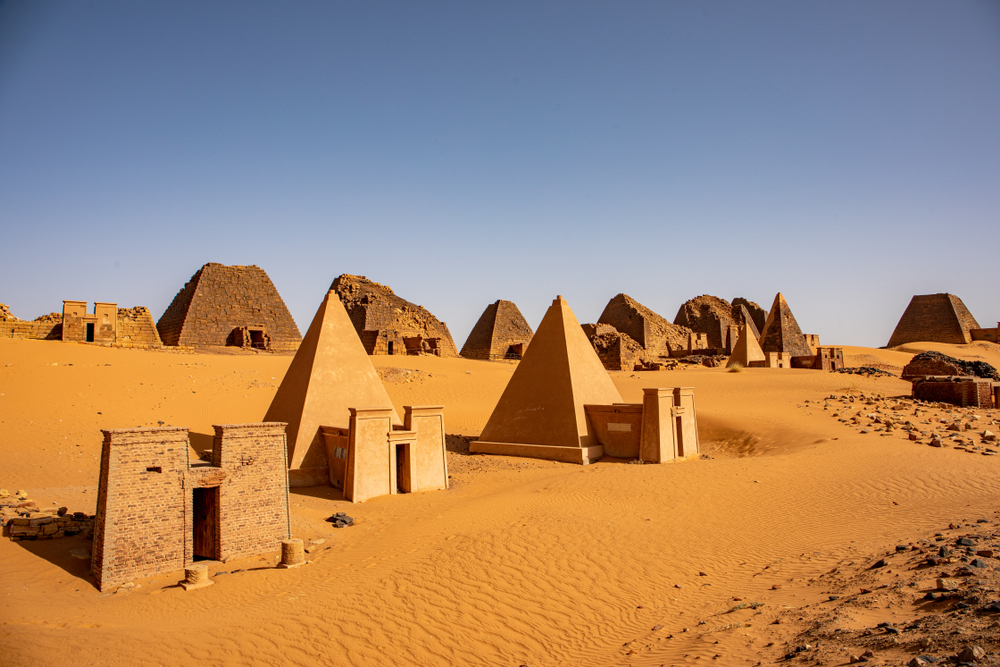
Sudan’s inner desert flatlands are situated near the Nile Valley, which stretches from Egypt towards the Red Sea. It once was the largest country in Africa, but divided in 2011, becoming the Republic of Sudan in the northern region and South Sudan.
Due to a lack of rainfall, the area is subject to frequent dust storms and summer temperatures in the desert zones that can reach 43.3°C (110°F).
The core plains area of the southern region experiences high temperatures, but the humidity is usually low. Annual rainfall in Khartoum is approximately 254 mm, with the heaviest rain occurring from mid-June to September.
9. The Maldives: 82.1°F (27.8°C)

The Maldives, recognized as being among the world’s greatest vacation destinations, now features the globe’s first submerged resort villa.
Vacations here are most enjoyable between November and April. Despite the year-round sunshine and warmth, the island country has both a distinct dry and wet season.
The year-round average high and low temperatures are both around 30°C (86°F). The year-round humidity level is around 80 percent and, like the temperature, is consistent.
10. Mauritania: 82.1°F (27.8°C)
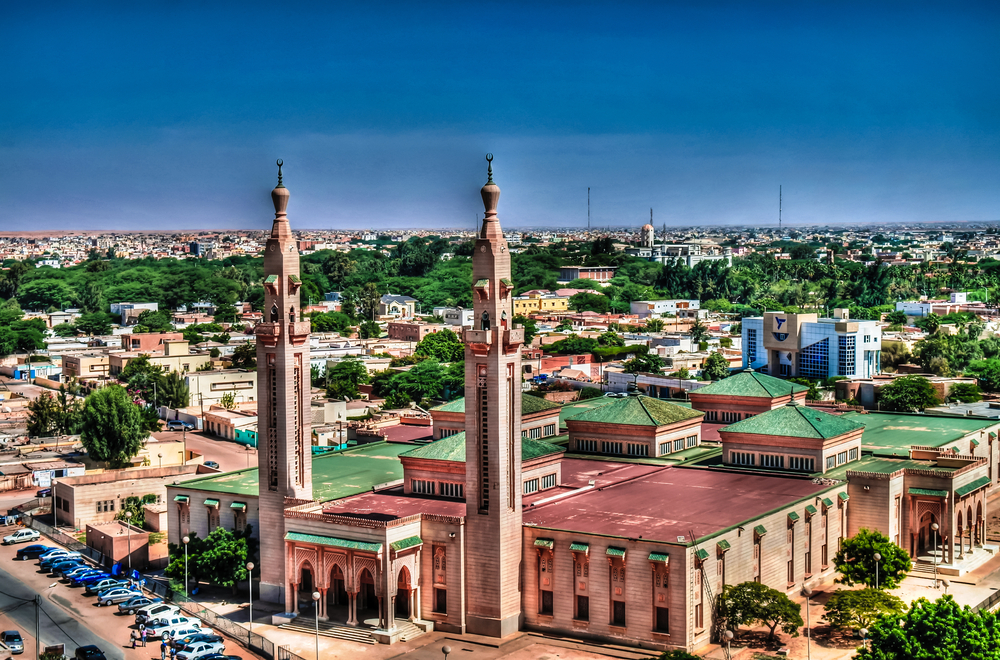
On Africa’s Coastline, the Sahara Desert meets the ocean in Mauritania. Iron and ore are found in abundance in Mauritania and are two of the nation’s most abundant natural resources.
Approximately two-thirds of Mauritania is desert, and for more than six months of every year, the daytime high across most regions surpasses 38°C (100°F). Due to its proximity to the desert, nights in Mauritania tend to be chilly.
Despite the desert-like circumstances, this country has three distinct climate zones: Desert, Arid; Sahel and Semi-arid; and Sudan Savannah.
11. Anguilla: 81.8°F (27.7°C)
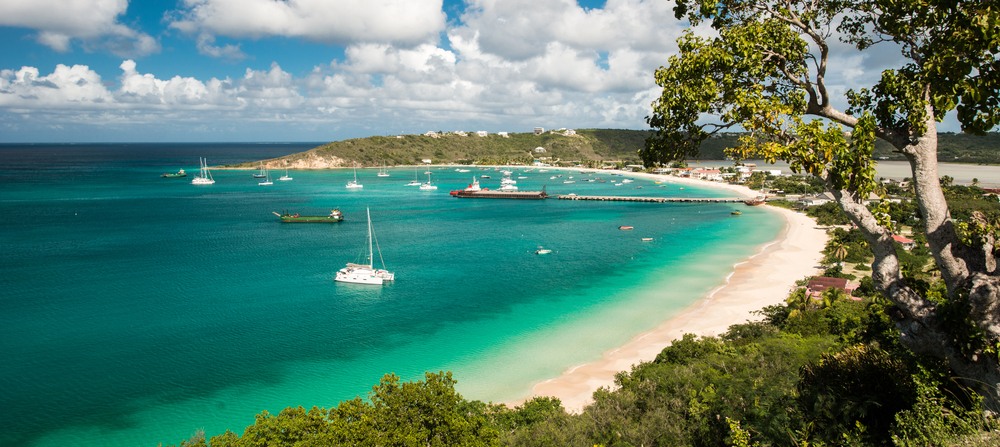
Anguilla is another country that is still recovering from Hurricane Irma, however, despite the damage, visitors can still visit to enjoy swimming with the dolphins or viewing the sea through a glass-bottom watercraft.
While there is a relatively cooler interval from December through March, the country’s tropical climate is hot throughout the year. While humid and sweltering temperatures affect the island between May and October, the trade winds do help to cool things down a bit.
Anguilla is in the midst of the Caribbean Sea and has a subtropical climate with temperatures ranging between 25 and 30°C (77–86°F) during the year.
Every year, the island of Anguilla sees more than 3,000 hours of sunlight, and although the country has a lot of rain year-round, it doesn’t last long due to the constant wind.
12. Curaçao: 81.5°F (27.5°C)

If you decide to visit Curaçao, you will have over 65 diving and snorkeling locations to choose from.
Weather conditions here range from 28 to 29°C (82–84°F) in December and February and increase to 31°C (88°F) in May and October.
May through October is the hottest time of year, but the constant flow of trade winds helps to cool things down.
13. Saint Lucia: 81.5°F (27.5°C)

Saint Lucia was voted the best honeymoon destination of 2017 by the World Travel Awards, and it’s easy to see why.
With an annual average temperature of 27°C (80°F), Saint Lucia has a warm and temperate climate. For much of the year, the region experiences mild trade winds.
The humidity here is between 77% and 82%, and the temperatures throughout the year shift from 23°C (75°F) to 35°C (95°F).
The shoreline receives 1,400 millimeters (55.1 inches) of rain annually, while the rainforest receives 3,900 millimeters (153.5 inches). Between January and April is the ideal time to visit the island because this is the period that experiences the least amount of rainfall.
14. Senegal: 81.5°F (27.5°C)
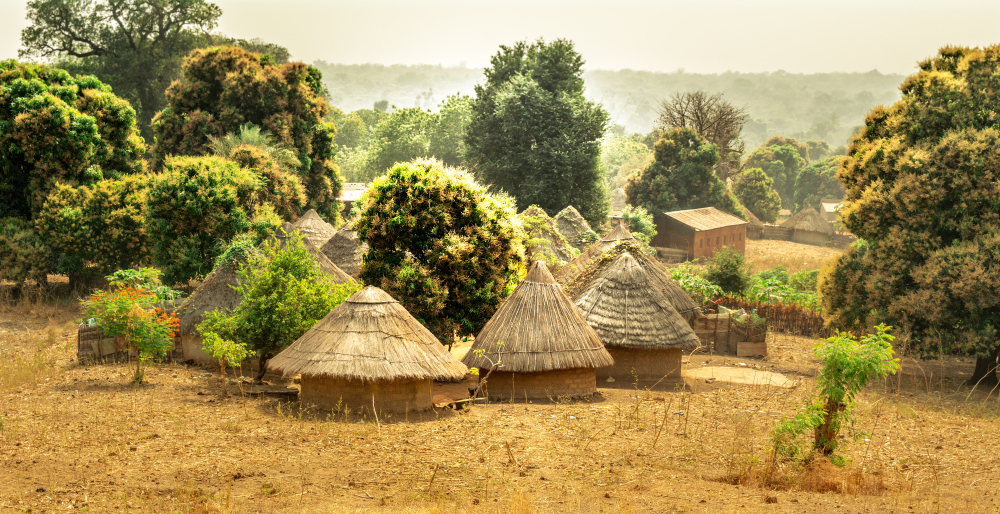
Senegal’s coastline region is home to 70 percent of the country’s people, although scientists predict that many will be displaced due to changes in climate caused by global warming.
Winds from the southeast are expected during the rainy season in Senegal (May to November), while the warmer, dry harmattan breeze overtakes the drier season (December to April). Cold, northeast winds and warm, southwest summer breezes create distinct hot and dry periods.
The average annual temperature in Senegal is 27.5°C (81.5°F) with a yearly precipitation accumulation of around 600mm (24in).
15. Marshall Islands: 81.3 °F (27.4°C)
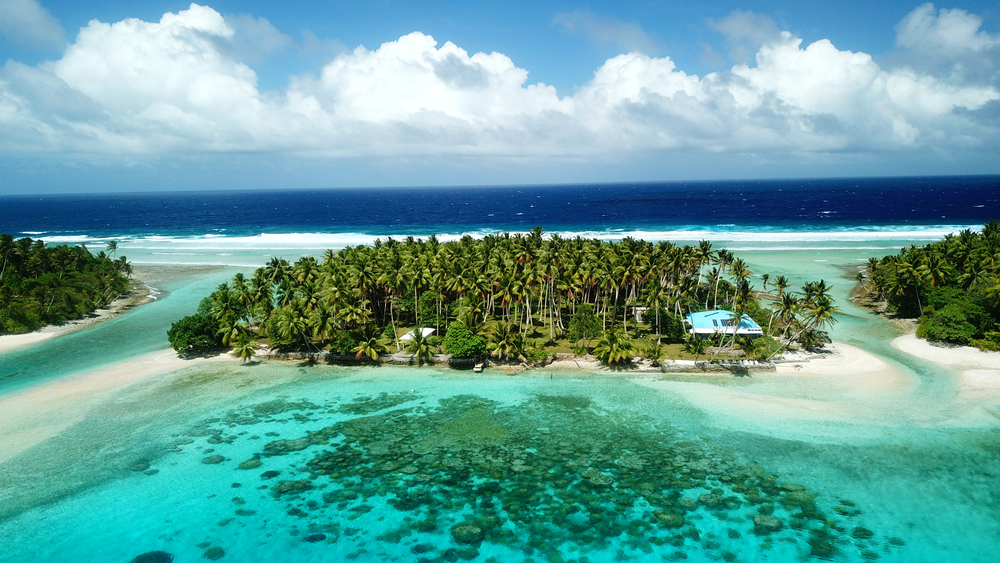
As a consequence of the second world war, there are numerous wrecked planes and boats in the waters surrounding the Marshall Islands.
Majuro’s year-round temperature ranges from 25 to 30°C (77–86°F). During the day, temperatures rarely rise above 33°C (91°F) or fall below 22°C (72°F).
A tropical, year-round hot weather exists on the Islands, with only minor temperature fluctuations. The heat here is also tempered by the constant movement of the trade winds.
16. Chad: 81.1°F (27.3°C)
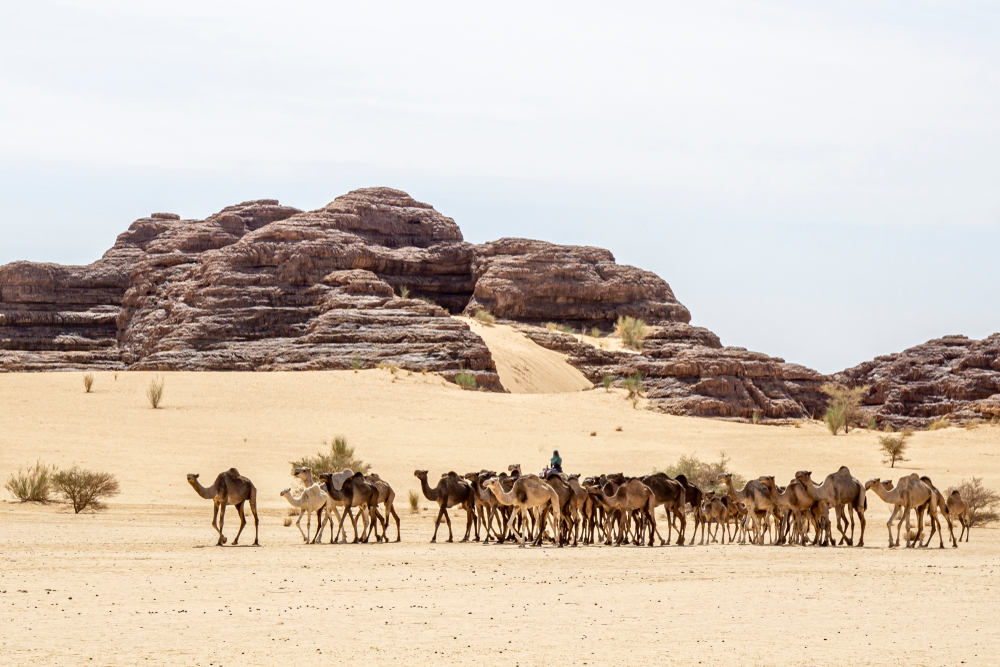
Libya borders the landlocked African country of Chad to the north, Sudan to the east, the Central African Republic to the south, Cameroon and Nigeria to the southwest, and Niger to the west.
The rainy season in Chad lasts only a few months at a time. For most of the year, temperatures hover around 20–30°C (80–90°F) during the dry season.
17. Tokelau: 81°F (27.2°C)

For the first time, Tokelau, an Australian colony and one of the globe’s most isolated areas, is entirely fueled by the sun.
With an average temperature of 28°C (82°F), Tokelau has warm weather with occasional rain.
Between April and October is the ideal time to visit Tokelau. The cyclone interval runs from December through March, so the journey from Samoa might be difficult during this time.
18. Tuvalu: 81°F (27.2°C)

Numerous unpopulated tiny islands surround Tuvalu’s nine territories, which form a nation in the South Pacific far from civilization.
Tuvalu experiences consistent rainfall throughout the year and has classic tropical weather with an average temperature of 30°C (86°F) year-round.
From March to October, the weather is generally more relaxed and enjoyable, while the precipitation from November to February may be a little uncomfortable for some.
19. Nauru: 81°F (27.2°C)
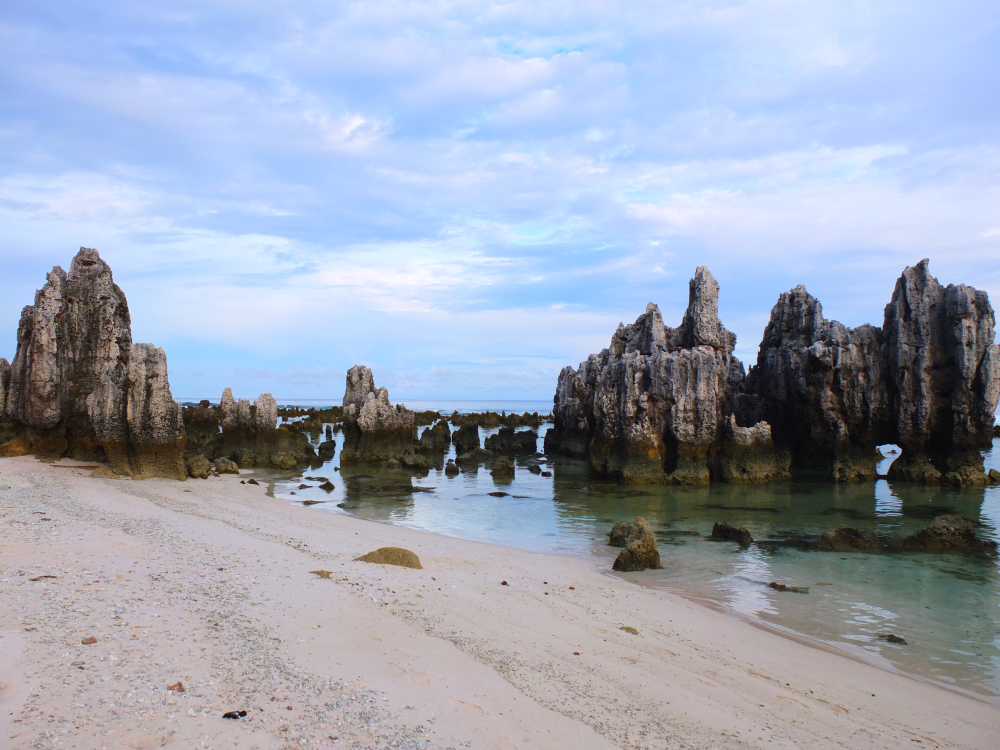
Throughout the year in Nauru, the average temperature hovers between 24°C (75°F) and 30°C (86°F). During October through December, the temperature rises by only a few degrees.
But from November to April, it’s possible to experience temperatures as high as 35°C (95°F). Nauru’s year-round climate is hot, humid, and equatorial. There is no dry season on Nauru.
20. Federated States of Micronesia: 81°F (27.2°C)
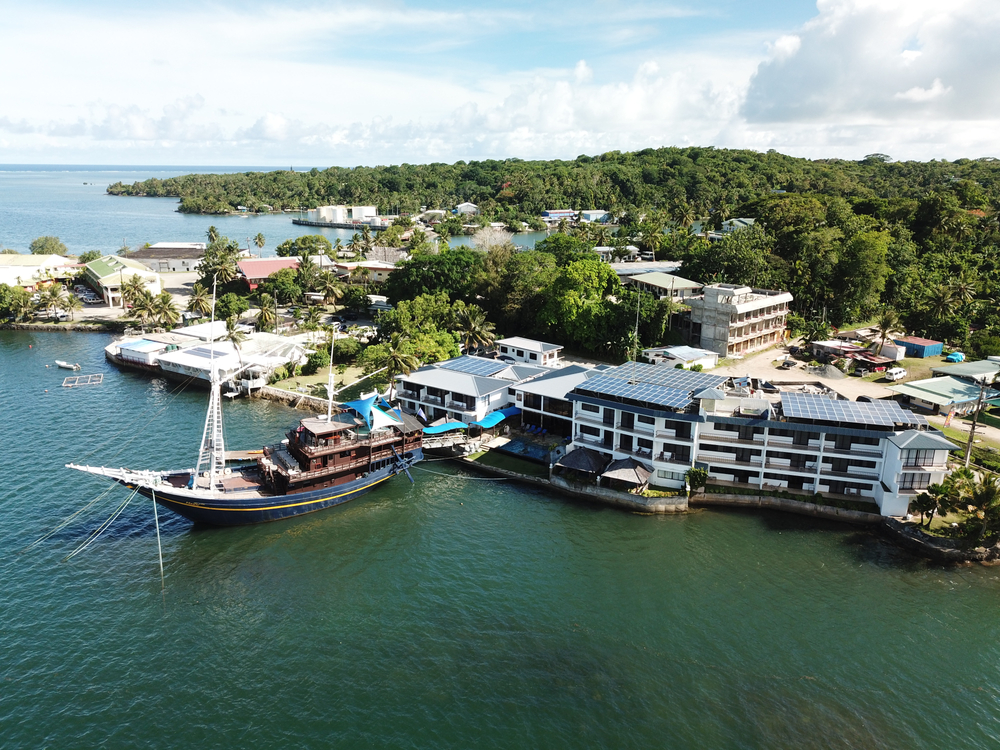
Micronesia is a country of over 600 islands that currently form into four different provinces.
Due to the ocean temperatures around the isles, the country undergoes minor temperature variations throughout the year.
From 1901 to 2019, the average annual temperature across the island group was 27.2°C (81°F)
21. Kiribati: 81°F (27°C)
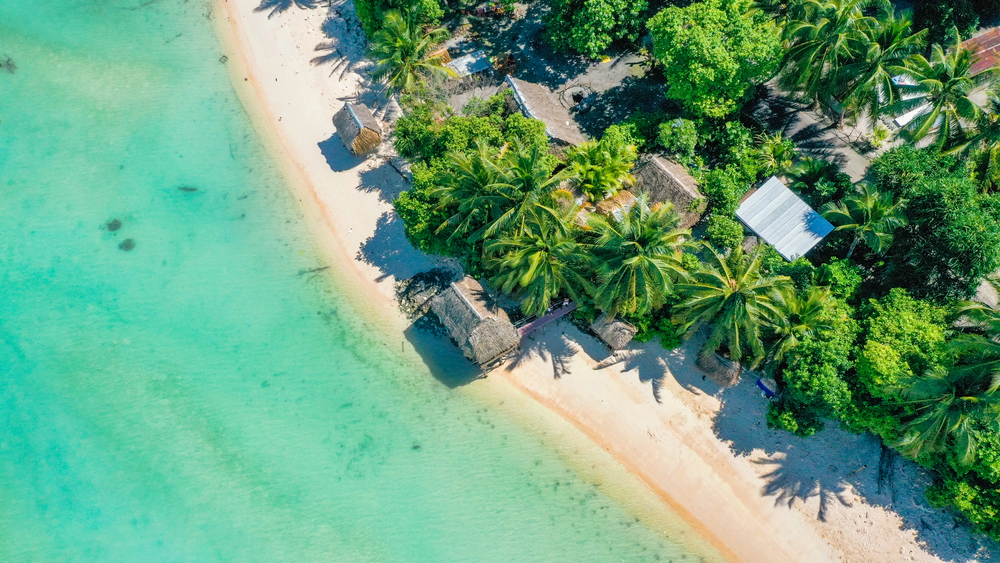
A string of over thirty islands in the Central Pacific Ocean makes up Kiribati, a country under threat from climate change.
During the day, the temperature in South Tarawa, its capital, is nearly constant at 31°C (88°F). Temperatures are consistently hot throughout the year because of Kiribati’s tropical climate.
However, the amount of rain varies greatly. Clustered around the equator, these islands spread across a large area of the Pacific Ocean.
22. Madagascar: 81°F (27.2°C)
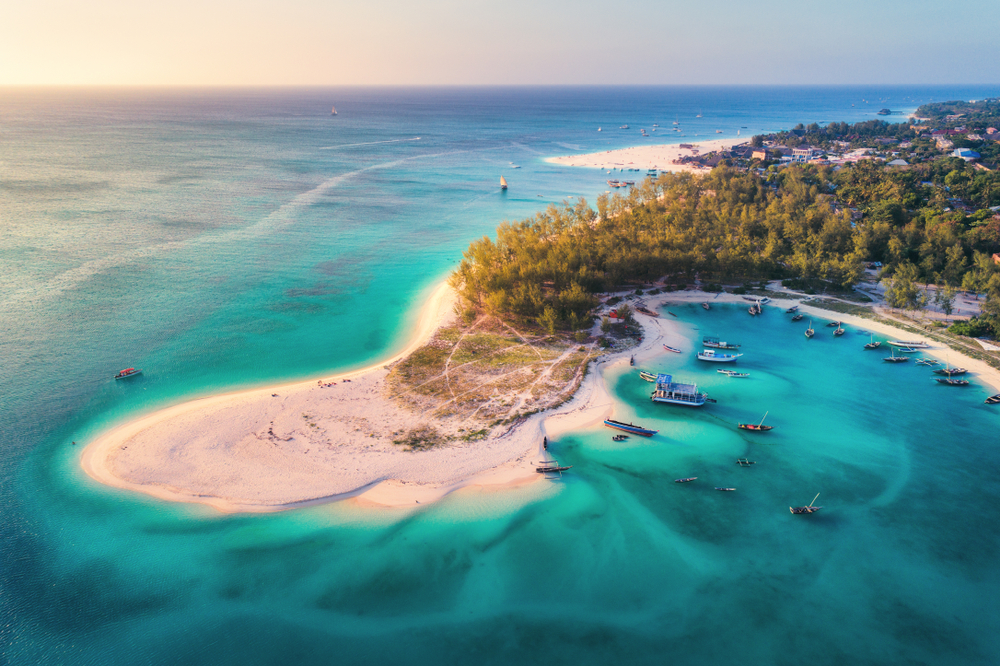
Madagascar is a massive island located off the east coast of Africa and is another country on this list with two distinct seasons, wet and dry.
The rainy season is from November to April and is quite hot, with temperatures that can reach 32°C (90°F) and is followed by a much cooler dry season where temperatures can dip to 13°C (55°F) – typically in the early mornings.
Although climate experts say that the amount of rainfall in Madagascar has been decreasing, the country still sees an average of 1000–1500mm (39–59 inches).
23. Montserrat: 81°F (27.2°C)
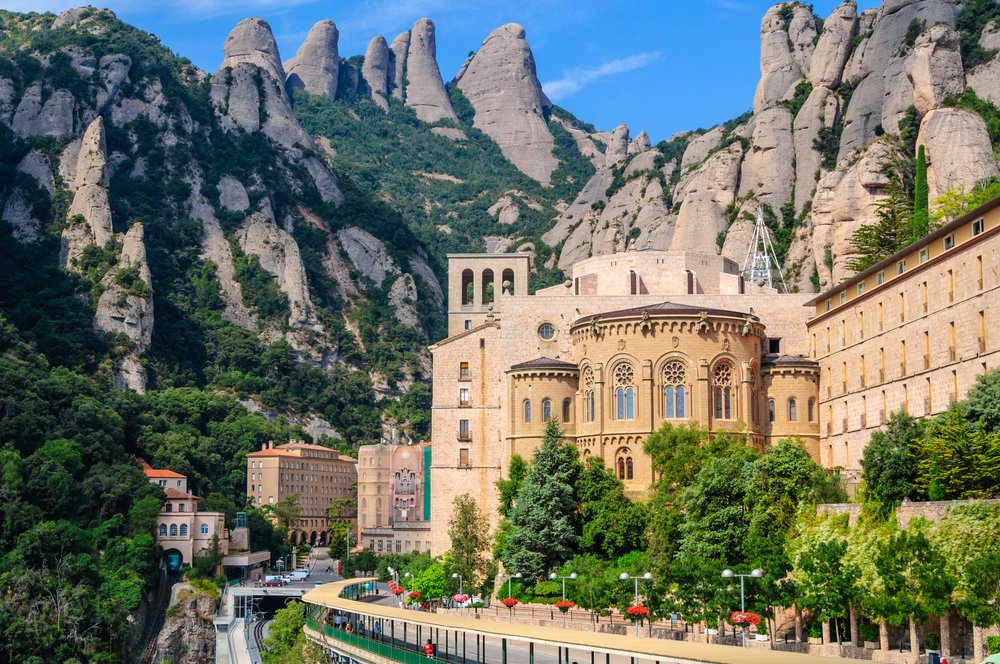
This Caribbean island, also a British Territory, gained popularity because of its black sand beaches and rugged landscape.
With a tropical climate that is hot and humid all year round, Montserrat has two distinct seasons: a relatively mild winter and spring from January to mid-April and sweltering summer and fall.
During May and October, the weather is pleasant, with average temperatures ranging from 20 to 25°C (68 to 77°F).
Typically, July to August is the hottest time of year and in October, there is a good chance of rain. July is the island’s hottest month, reaching a maximum average temperature of 29°C (84°F).
24. Glorioso Islands: 81°F (27.2°C)

Known as Grande Glorieuse in French, the French-possessed Glorioso Islands are just off the coast of eastern Africa, to the north of Madagascar.
The islands have an average daily temperature between 23°C (75°F) and 27°C (82°F), with the highest temperatures occurring being December through April. The climate is tropical, and the terrain is low and flat, varying in height from sea level to twelve meters (39 feet).
Île de Lys, specifically, is an important place for migrating birds on the Glorioso Islands, and many turtles lay their eggs along the shorelines. In the ocean, migratory species such as humpback whales and whale sharks may appear.
25. Juan de Nova Island: 81°F (27.2°C)
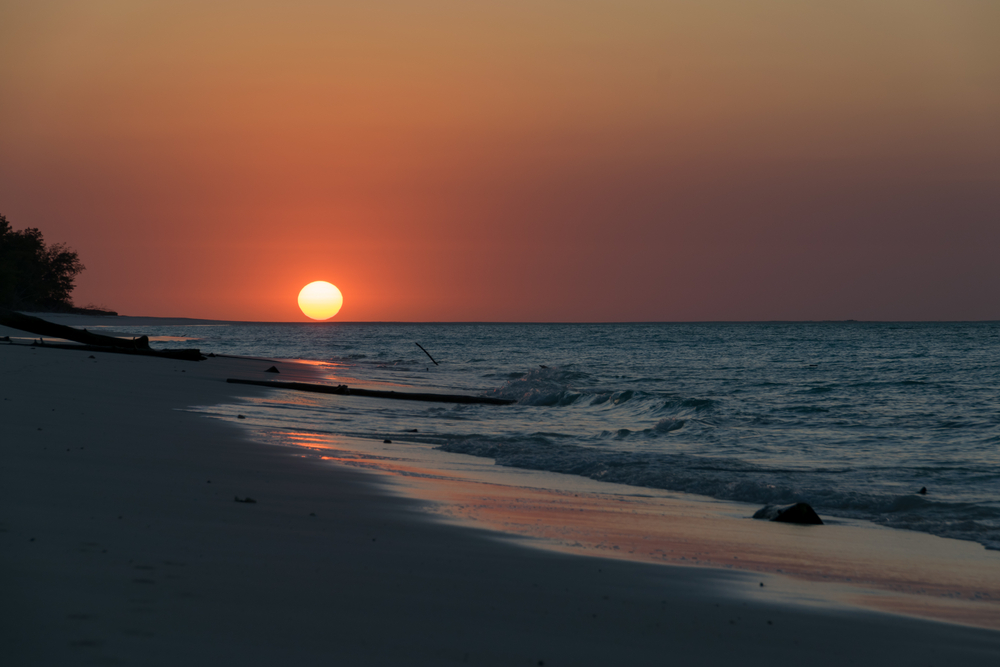
Juan de Nova is a beautiful island inside of the Mozambique Channel and has belonged to the French since 1897.
The average annual temperature here is 26.9°C (80.42°F) and if you are planning a visit, be prepared to face frequent and fierce storms.
26. Brunei: 81°F (27.2°C)
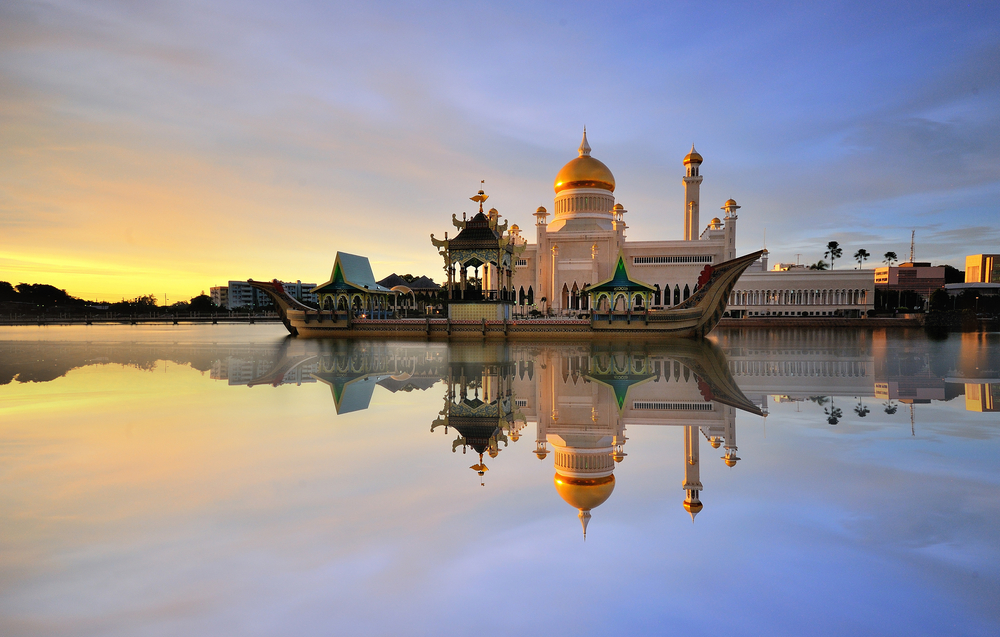
Countless people recognize Brunei for its beautiful metropolis, Bandar Seri Begawan, and the famous Prince Abdul Mateen.
The average annual temperature in Brunei is 27°C, and it has a tropical and temperate climate where it rains heavily nearly every month. This country receives approximately 118 inches of rain annually.
Brunei has two monsoon seasons, and when the northeast and southwest monsoons peak, the rainy season lasts from December through February.
The ideal time to go there is between February and April when the weather is more pleasant, however, it’s also the hottest time of year.
27. Palau: 80.9°F (27.2°C)

The Western Pacific Ocean country of Palau consists of a total of 50 islands. Palau relishes a yearly average temperature of 30°C (86°F) thanks to its proximity to the equator making it warm year-round.
Between November and April, temperatures can reach 32°C (90°F) and will fall as low as 27°C (81°F) during the dry season.
28. American Samoa: 80.8°F (27.1°C)
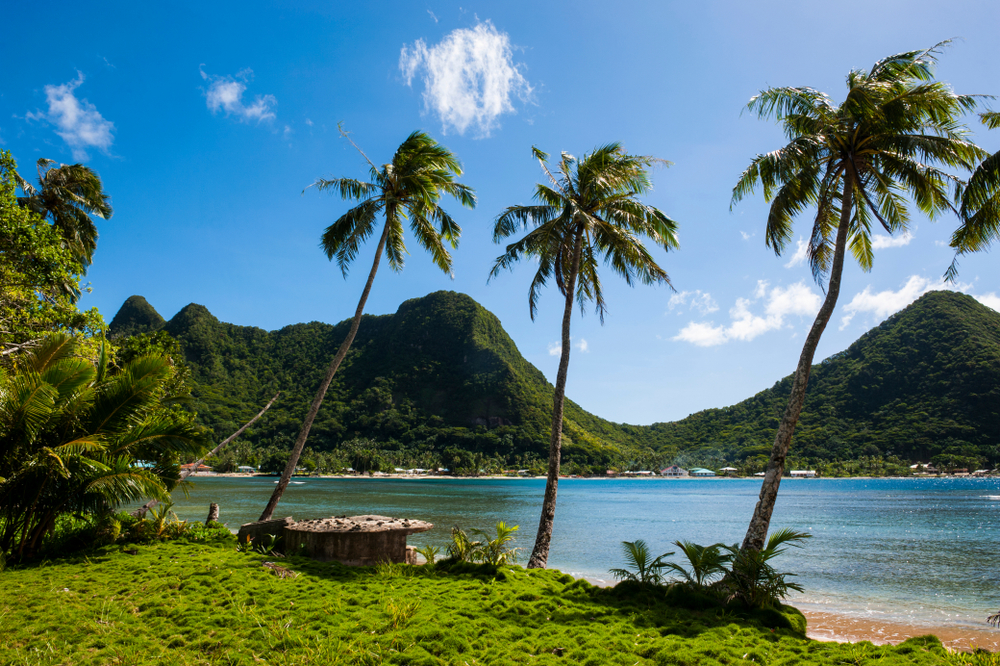
American Samoa, a US province in the South Pacific, consists of seven small islands.
The year-round average temperature here is 27°C (82°F), and the warm waters of the Pacific Ocean help keep the nighttime temperatures warm and humid.
29. Thailand: 80.7°F (27.1°C)
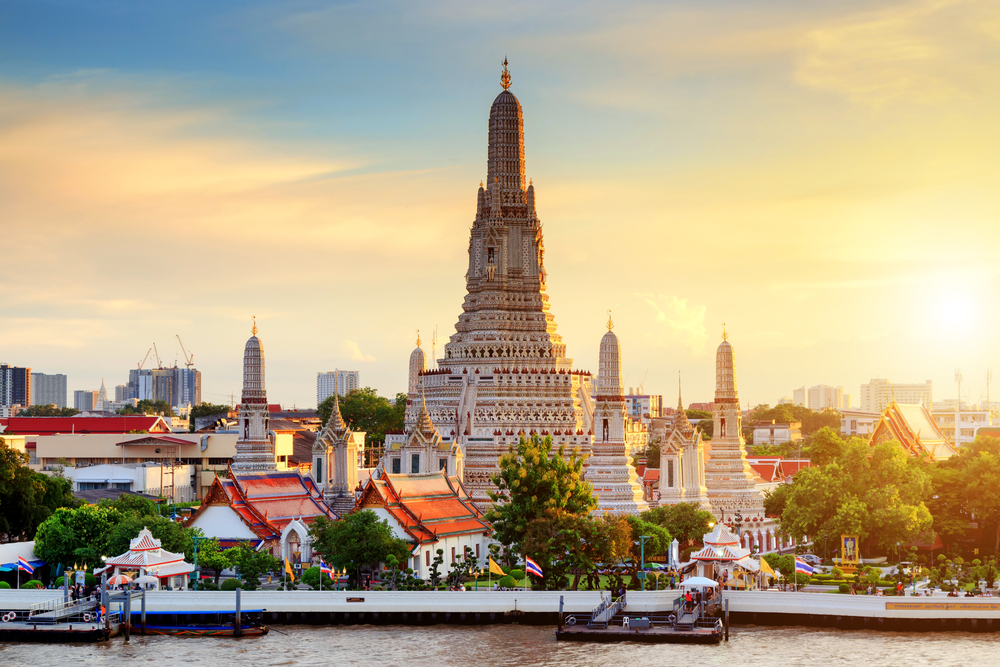
Thailand is a major tourist attraction because of its cuisine, traditions, and scenery.
This country has a warm climate with each season having its own unique weather. It’s often (very) warm and muggy, depending on the season and area.
Temperatures range on average from 28–33 °C (82–91°F) during the winter, and you can expect 30–36°C (86–97°F) from spring through summer, with April being the hottest month.
30. Yemen: 80.7°F (27.1°C)
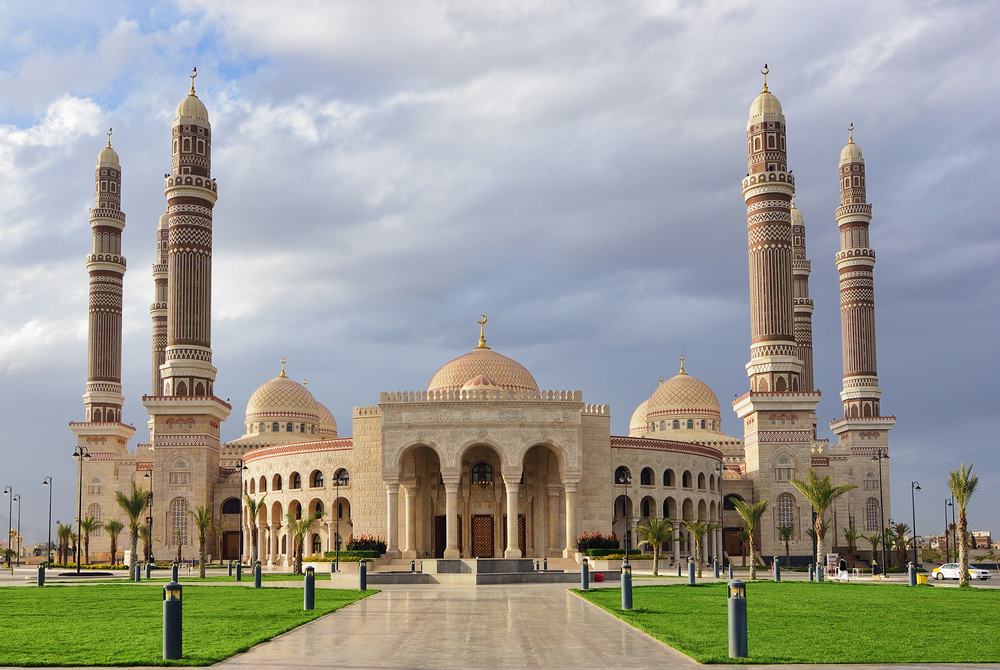
In Aden (Yemen’s temporary capital) during the winter months, the average is 25°C (77.0°F), and in the summer months, it can go as high as 32°C (89.6°F). High temperatures in some areas frequently exceed 37°C.
The country does experience decent rainfall, with an average of 127 millimeters of rain per year (5 inches) in most regions. However, in the elevated terrains of the south, there can be between 520 and millimeters (20.5 to 29.9 inches) per year.

